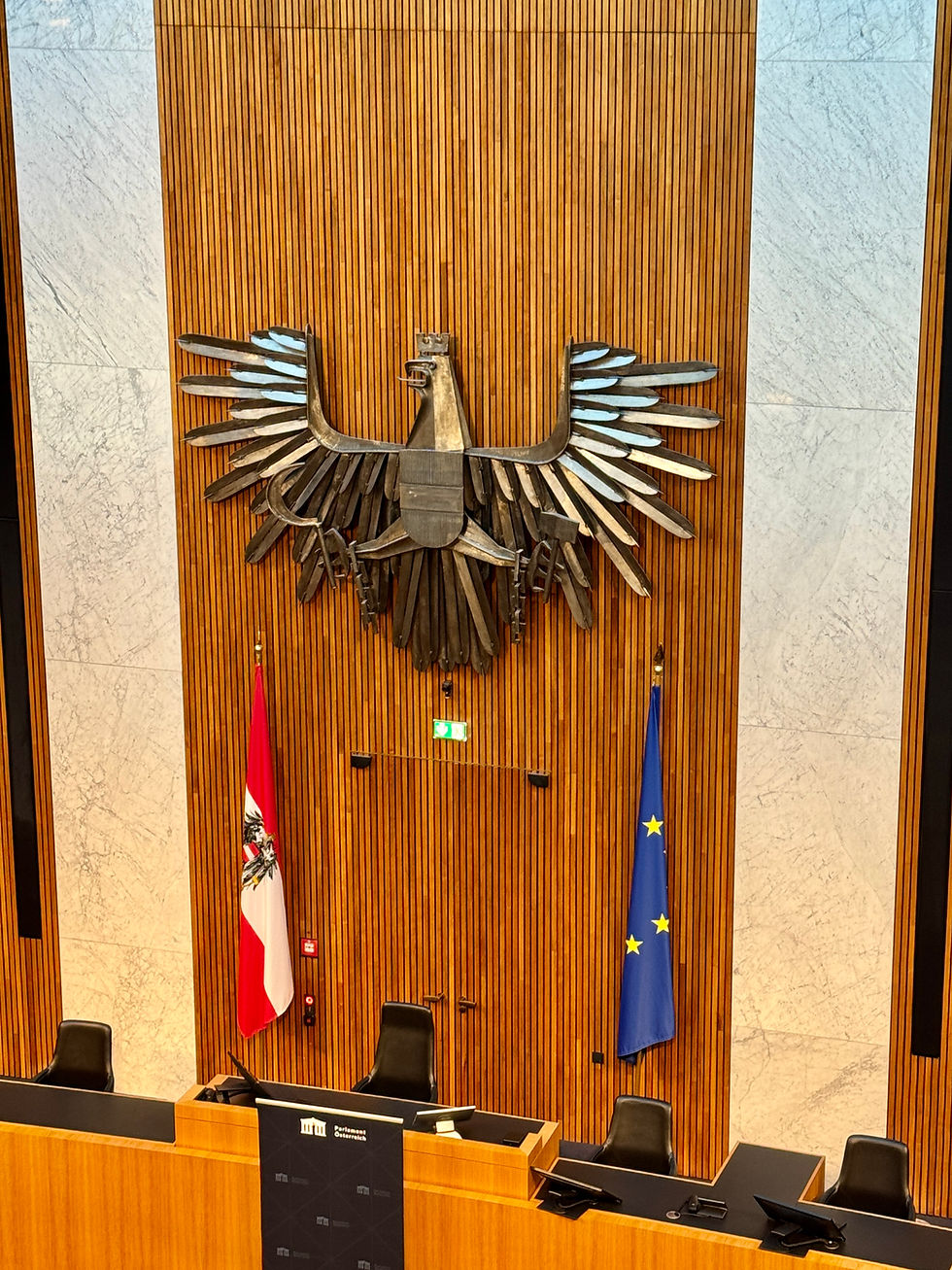Oberes Belvedere - 800 Years of Art with All the Paintings You’ve Seen in Books!
- Mika Vepsalainen
- Oct 22, 2022
- 3 min read
Updated: Apr 19, 2023
Join us for a visit to the first of the three Belevedere museums, the brilliant Upper Belvedere housing an impressive collection of Austrian and international classical art in an extremely beautiful palace that has seen imperial residents, peace agreements, Nazi influence and much more!

When you arrive, enjoy first the beautiful park between the upper and lower (a separate review coming!) Belvedere museums. The Palaces are two magnificent buildings from the eighteenth century when the legendary general Prince Eugene of Savoy used them as his summer residence just outside Vienna's city gates. As one of the world’s most stunning Baroque landmarks, the palace complex was listed a UNESCO World Heritage Site in 2001.
The Belvedere was built during a period of extensive construction in the imperial capital Vienna. Home to the ruling Habsburg dynasty, Vienna's prosperity of the period coincided with the commander-in-chief Prince Eugene of Savoy's successful conclusion of a series of wars against the Ottoman Empire, and it shows! The construction of the Upper Belvedere began as early as in 1717, as Prince Eugene mentioned in his letter to his servant in summer 1718. Already as early as on 2 October 1719 Eugene received the Turkish ambassador Ibrahim Pasha at his new residence.
Today, the Upper Belvedere appears on the Austrian 20-cent coin.
After Eugene, Franz Ferdinand, the heir to the throne, lived here between 1894 and 1914. It was from here that he traveled to Sarajevo and to his untimely assassination that led to the start of WWI.
After the death of Prince Eugene, Empress Maria Theresa acquired the entire complex and transformed the Upper Belvedere into an exhibition venue for the imperial collections – making it one of the first public museums in the world. The Marble Hall was the venue for important historical events and now offers an unparalleled view of Vienna. More recently, it was in the very Marble Chamber that, on 15 May 1955, the Foreign Ministers of France, Great Britain, the Soviet Union, the United States, with blue ink and Austria with green signed the Austrian State Treaty, which restored the country's independence as an independent neutral republic.
Today, the Upper Belvedere is the most visited art museum in Austria, and for a reason! The magnificent palace houses one of Austria's most valuable art collections with key works by e.g Egon Schiele and Oskar Kokoschka in the section for Vienna Modernism and the art of 1900. The heart of the collection are the 24 paintings of Gustav Klimt including the world famous "Judith" and the Art Nouveau icon "The Kiss", that was acquired by the Imperial Ministry of Culture and Education for the Modern Gallery in 1908. Check also our two separae reviews for more information on Klimt's work and life: the Secession on the Art Nouveau in Vienna and his Beethovenfrieze, on loan there from Belverere and the Klimt Villa highlighting his life and the sad fate of many of his paintings and their models.
The rest of the 420 works at Belvedere are grouped in three floors as the Middle Ages, Baroque, Classicism and Biedermeier. Belvedere, too, is one of the museums that is dealing with Austria’s Nazi past through its permanent exhibition. During the Nazi regime the close connections between the museum administration and Nazi authorities resulted on the one hand in a considerable acquisition budget for "native German art" and on the other by the closure of the Modern Gallery under the false claim of "saving degenerate art from confiscation." Many important works such as Gustav Klimt's faculty paintings were lost.
Between the 1950’s and as late as 2014, several pieces of Nazi looted art were restituted, some after a considerable back-and-forth between authorities, courts and the rightful heirs of the killed original owners.
We are happy to report that the museum is rightly proud of being easily accessible to everyone and there are several accessible loos. In addition, in order to prevent discrimination, all loo facilities are gender-neutral.
There are two shops, one in the ticket pavilion and another in the palace itself. Both sell very interesting coffee table books and good taste souvenirs and much more, do not forget to check!
There is a charming café in the ground floor serving food and drinks during the museum’s opening hours, perhaps a bit on the pricy side but definitely worth a visit!
Oberes Belvedere
Prinz Eugen-Straße 27, 1030 Wien
www.belvedere.at










































Comments